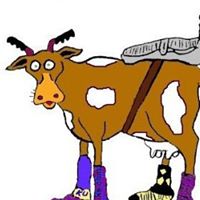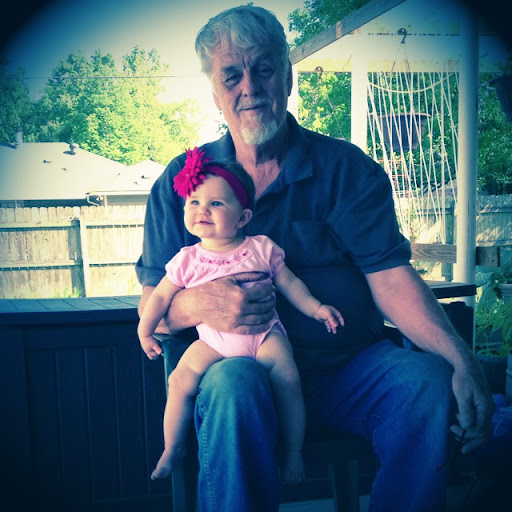William A Reinhart
age ~79
from Fort Thomas, KY
- Also known as:
-
- William Anthony Reinhart
- William D Reinhart
- William M Reinhart
- Wm D Reinhart
- William A Reinhardt
- William A Fennell
- Willia Reinhart
- William Reinholt
- Phone and address:
-
509 Telescope Vw, Newport, KY 41076
8597812388
William Reinhart Phones & Addresses
- 509 Telescope Vw, Newport, KY 41076 • 8597812388
- 509 Telescope Vw #202, Newport, KY 41076 • 8597812388
- Fort Thomas, KY
- 10721 Kelsey Dr, Independence, KY 41051 • 8592830010
- Reynoldsburg, OH
- Omaha, NE
- Kenton, KY
Work
-
Company:Steak 'n shake
-
Address:831 Clepper Ln, Cincinnati, OH 45245
-
Phones:5139430990
-
Position:Manager
-
Industries:Eating Places
Wikipedia

William Reinhart
view sourceWilliam J. "Bill" Reinhart (August 2, 1896 February 1971) was an American college basketball, football, and baseball coach at the George Washington ...
Name / Title
Company / Classification
Phones & Addresses
Manager
Steak 'N Shake
Eating Places
Eating Places
831 Clepper Ln, Cincinnati, OH 45245
Website: steaknshake.com
Website: steaknshake.com
Founder
Century 21 Call First
Real Estate Agents and Managers
Real Estate Agents and Managers
425 Walnut Street, #1200, Cincinnati, OH 45202
President
Apco of Cincinnati Inc
Retail Windows & Doors
Retail Windows & Doors
1109 4 Ave, Newport, KY 41074
5137698881
5137698881
Owner
Reinhart Renovations
Single-Family House Construction
Single-Family House Construction
125 Ridgeway Xing, Grants Lick, KY 41001
ROB REINHART EXCAVATING & DEMOLITION, INC
Manager
Steak N Shake Operations, Inc
Restaurant-Fam Chain · Full-Service Restaurants
Restaurant-Fam Chain · Full-Service Restaurants
831 Clepper Ln, Cincinnati, OH 45245
5139430990, 5139431098
5139430990, 5139431098
APCO OF CINCINNATI, INC
Principal
Apco Window & Door
Whol Lumber/Plywood/Millwork · Doors
Whol Lumber/Plywood/Millwork · Doors
125 Ridgeway Xing, Grants Lick, KY 41001
8593447070
8593447070
Us Patents
-
Multi-Media Enhanced Program Controlled Machine
view source -
US Patent:6609038, Aug 19, 2003
-
Filed:Sep 11, 2000
-
Appl. No.:09/658888
-
Inventors:Fred James Croswell - Felicity OH
Ronald M. Sparer - Loveland OH
William A. Reinhart - Georgetown OH -
Assignee:Milacron Inc. - Cincinnati OH
-
International Classification:G05B 1500
-
US Classification:700 83, 700 86, 700 88, 700197, 700180, 700181, 345716, 345719, 345720, 345727, 345730, 345705, 345706, 345707, 345708, 345709, 345547, 345555, 345556, 345965, 345770, 345771, 345970, 345972
-
Abstract:A program controlled machine wherein signals produced in response to execution of programs control operation of machine devices includes a control for storage, retrieval and presentation of audio/video information. The control includes devices for presentation of audio/video information and stored programs including programs for enabling storage of audio/video information files while the machine is in a manual mode of operation and programs for controlling the presentation by the audio/video presentation devices of selected audio/video information from the stored files. The control provides facilities for recording audio/video information and for manually controlled presentation of audio/video information as well as for automatic presentation of audio/video information in response to detection of occurrence of a particular event.
-
Method For Reducing Cycle Time In An Injection Molding Machine
view source -
US Patent:54549957, Oct 3, 1995
-
Filed:Apr 18, 1994
-
Appl. No.:8/229476
-
Inventors:Michael A. Rusconi - Cincinnati OH
William A. Reinhart - Georgetown OH -
Assignee:Cincinnati Milacron, Inc. - Cincinnati OH
-
International Classification:B29C 4554
B29C 4518 -
US Classification:2643288
-
Abstract:The method of the present invention relates to reducing cycle time in injection molding machines that are running large capacity molds, such as multiple cavity preform molds, and require a high volume supply of quality melt. Specifically, the present invention proposes using a continually plasticizing extruder to supply two melt accumulators which will alternately operate to inject the plastic material into the mold. To accomplish this, a rotary valve at the end of the extruder is controlled to fill the pots, and ball check valves are positioned to control flow direction and limit pressure in certain parts of the system. A shuttle valve between the shot pots and before the nozzle facilitates decompression.
-
Mold Clamping System
view source -
US Patent:49900846, Feb 5, 1991
-
Filed:Nov 6, 1989
-
Appl. No.:7/432462
-
Inventors:William A. Reinhart - Cincinnati OH
-
Assignee:Cincinnati Milacron Inc. - Cincinnati OH
-
International Classification:B29C 4566
-
US Classification:425590
-
Abstract:A clamping system for traversing and clamping molds in a molding machine, the clamping system including a toggle-type clamp arrangement defined by a plurality of pivotally connected links. A movable crosshead is carried on a crosshead guide, and a ball screw is non-rotationally secured to the movable crosshead to extend in the direction opposite from the face of a cooperating fixed mold portion. A pair of ball nuts are carried by the ball screw and each of the ball nuts is drivingly connected with a respective servomotor. One of the servomotors is adapted to provide rapid traverse movement for the movable crosshead, and the other servomotor is adapted to provide high torque for high clamping force to hold a pair of mold halves in tightly contacting relationship during the injection into a mold cavity defined by the mold halves of a flowable material under pressure.
-
Mold Clamping System
view source -
US Patent:51023270, Apr 7, 1992
-
Filed:Oct 22, 1990
-
Appl. No.:7/600850
-
Inventors:William A. Reinhart - Cincinnati OH
-
Assignee:Cincinnati Milacron Inc. - Cincinnati OH
-
International Classification:B29C 4566
-
US Classification:425590
-
Abstract:A clamping system for traversing and clamping molds in a molding machine, the clamping system including a toggle-type clamp arrangement defined by a plurality of pivotally connected links. A movable crosshead is connected with one end of the toggle and is carried on a crosshead guide, and a ball screw is rotatably secured to the movable crosshead to extend in the direction opposite from the molds and through a stationary platen. A ball nut rotatably carried by the stationary platen is in engagement with the ball screw and is drivingly connected with a first motor to axially move the ball screw to provide between the molds a clamping force sufficient to resist separation of the molds during high pressure injection of molding material. A second motor is drivingly coupled with the ball screw and is movable therewith in an axial direction. The second motor is adapted to rotate the ball screw for rapid traverse movement of the movable crosshead to rapidly bring the molds into and out of contact.
-
Mold Clamping System
view source -
US Patent:51907143, Mar 2, 1993
-
Filed:Nov 13, 1991
-
Appl. No.:7/791205
-
Inventors:William A. Reinhart - Cincinnati OH
-
Assignee:Cincinnati Milacron Inc. - Cincinnati OH
-
International Classification:B29C 4566
-
US Classification:2643281
-
Abstract:A clamping system for traversing and clamping molds in a molding machine, the clamping system including a toggle-type clamp arrangement defined by a plurality of pivotally connected links. A movable crosshead is connected with one end of the toggle and is carried on a crosshead guide, and a ball screw is rotatably secured to the movable crosshead to extend in the direction opposite from the molds and through a stationary platen. A ball nut rotatably carried by the stationary platen is in engagement with the ball screw and is drivingly connected with a first motor to axially move the ball screw to provide between the molds a clamping force sufficient to resist separation of the molds during high pressure injection of molding material. A second motor is drivingly coupled with the ball screw and is movable therewith in an axial direction. The second motor is adapted to rotate the ball screw for rapid traverse movement of the movable crosshead to rapidly bring the molds into and out of contact.
Resumes

William Reinhart
view sourceIndustry:
Online Media

William Reinhart
view source
William Reinhart
view source
William Reinhart
view source
William Reinhart
view source
William Reinhart
view source
William Reinhart
view source
William Reinhart
view sourceLocation:
United States

William Reinhart
view source
William Reinhart
view source
William Reinhart
view source
William Reinhart
view source
William Reinhart
view source
William John Reinhart Jr.
view source
William Raymond Reinhart
view sourceClassmates

William Reinhart
view sourceSchools:
St. Michael's High School New Lothrop MI 1961-1971
Community:
Elaine Reinhart, Joyce Turnwald, Patricia Reinhart, Aggie O'hare

William Reinhart
view sourceSchools:
Ft. Branch High School Ft. Branch IN 1960-1964
Community:
Diana Poole, Donna Mason, Leroy English, Dalyne Brewer

William Reinhart
view sourceSchools:
Frankfurt Elementary School 1 Frankfurt SC 1968-1970
Community:
Denise Stewart, Robert Sachuk

William Reinhart
view sourceSchools:
Parkview Arts Science Magnet High School Little Rock AR 1993-1997
Community:
Meredith Dillard, Ginger Burgess

William Reinhart
view sourceSchools:
Bedford High School Delaware City DE 1961-1963
Community:
Judith Prest, Kenneth Hess, Rose Carroll, Earl Jones

William Reinhart
view sourceSchools:
Bedford High School Delaware City DE 1960-1963
Community:
Judith Prest, Kenneth Hess, Rose Carroll

William Reinhart, Baker H...
view source
William Reinhart | Columb...
view sourceMyspace
Youtube
Googleplus

William Reinhart

William Reinhart

William Reinhart

William Reinhart
Flickr
Get Report for William A Reinhart from Fort Thomas, KY, age ~79
















